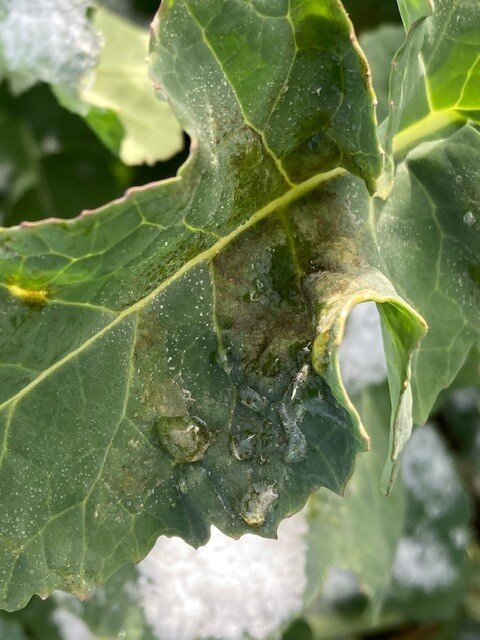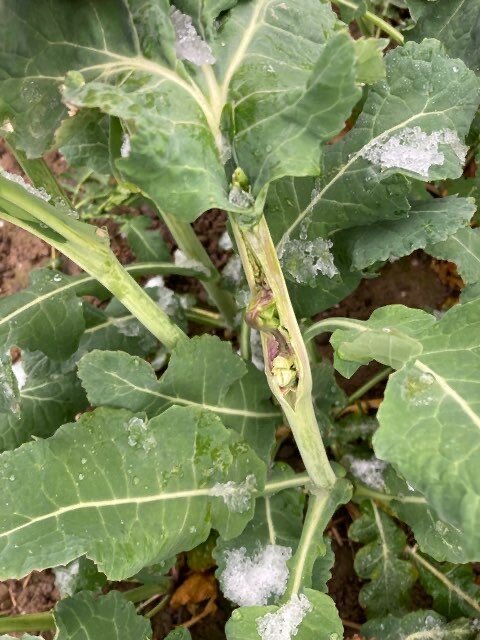We are at the time of year when trial site visits with our German OSR breeders take place to see our new material particularly in Scotland where our LLS inoculated trials are situated on two sites near Melrose and Culross. In total we are looking at 1500 inoculated small plots (see pic) scoring them accordingly as to the disease severity and any other observations we might see, to give us a good data set we will visit the trials three times during the months of March and April to ensure we cover the main period of LLS infection.
This year we have seen some good levels of infection as the picture shows and on the two visits we have done so far the LLS has now begun to move up the plant to re infect new growth, a further visit is planned for the end of April.
The trials we were looking at were at green yellow bud with differences in spring vigor and early growth quite evident in the field, more locally and at the Flawbrough trial site OSR has begun to flower and by the time this goes out many will be well into flowering.
The few warm days in March and early applications of fertilizer saw some very quick growth and lush crops, many would have received an application of a PGR either in the form of the type of fungicide or a specialist product plus fungicide as LLS could be found in many crops.
Most crops will now have received another dose of nitrogen which could well be the last or it is imminent while travel through the crop is still possible, at Flawbrough we have some trials which will receive 50% les N although so far visually you couldn’t see a difference as you can’t so far either in plots sprayed with the growth regulator product, but both trials are in the early days of testing.
Pollen beetle did threaten in the warm spell but flowering had started and thresholds nowhere near so it wasn’t a problem, traps will go out soon to monitor for seed weevil.
One observation noted in crops this year can be seen in the picture below believed to be herbicide damage which shows at stem extension, opinion is it looks worse than it is and the plants recover and compensate with no detriment to performance.
In other crops at Flawbrough the winter barley variety trial has received a T0 aimed particularly at mildew plus a first split of PGR, again the warm weather pushed them on growth wise hopefully the cooler weather has slowed them down. T1 is planned around mid-month with a second PGR, some fungicide treatments in the fungicide trials are being based on the SwiftDetect system by Microgenetics which is a rapid crop disease test to identify disease in the crop.
The winter wheat varieties are at GS30 and will have received a T0 plus PGR in the first week of April leaving a gap of around 2.5/3 weeks to T1 septoria can be found on lower leaves with some varieties worse than others, so far no yellow rust but conditions are returning to a higher risk of infection as we sit here in the first week of April.
Again the fungicide trials will have plots based on the SwiftDetect system plus, various levels of fungicide input as well as treatments with biostimulants, different PGR input is also being looked at.
First applications of N have been applied to the barley and wheat with further applications planned for the end of the month.



